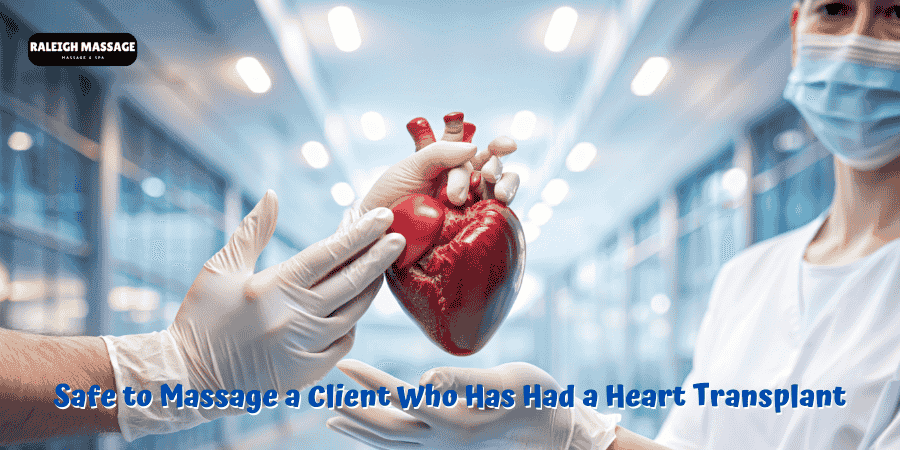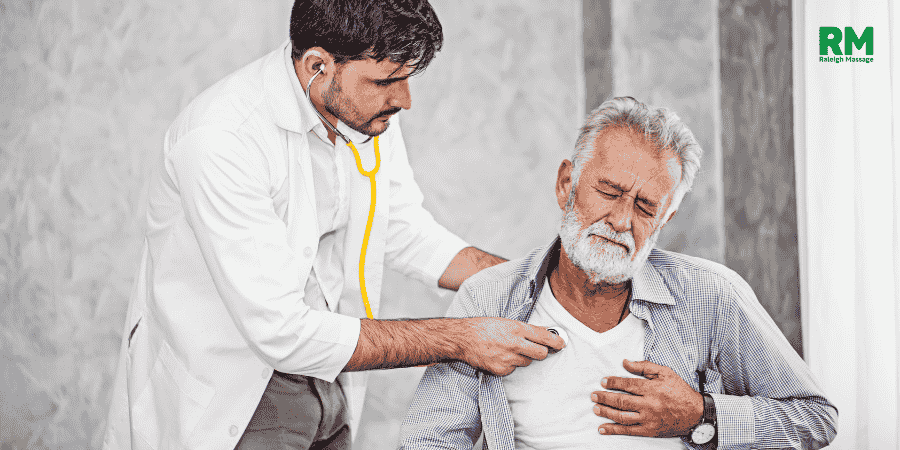When it comes to massage therapy, safety is always the top concern. But what if the person requesting a massage has had a heart transplant? It’s a question that deserves thoughtful consideration. If you’re like me, you may immediately ask, “Is it safe? Can massage help or harm someone in this situation?” Those are valid questions. I’ll guide you through it all, and by the end, you’ll have a clear understanding.
Heart Transplants and Their Aftermath
A heart transplant is a life-saving procedure. It replaces a damaged or failing heart with a healthy one from a donor. For many people, it feels like a second chance at life, but that doesn’t mean life returns to normal right away. The recovery process is long, and maintaining health afterward is crucial.
People who’ve had a transplant usually take medications every day. These medicines stop the immune system from attacking the new heart. But they can also affect skin, muscles, and overall healing. Because of this, it’s essential to approach touch, like massage, with care.
If someone’s come to you for a massage after a transplant, chances are they’re looking to relax or manage stress. While massage is known for these benefits, it’s important to know when it’s appropriate—and when caution is needed.
Is Massage Safe for Heart Transplant Clients?
The short answer? The answer, in most cases, is yes — massage can be safe for someone who has had a heart transplant. But the honest answer brings key “buts.” Like everything, it depends on the person, the kind of massage, and where they are in their recovery.
I found stories from therapists who take transplant clients. Another therapist recalled a heart transplant patient who scheduled their first massage after a year of recovery. They noted it was a soft, soothing session without any deep tissue work—and the client loved it!
But this is not one-size-fits-all. Before you proceed, you need to take timing, health conditions and doctor-approved guidelines into account. Here’s how to break it down.
When Is It Safe to Massage a Client Who Has Had a Heart Transplant?
Timing is everything. Usually, doctors recommend avoiding massage for at least several weeks after surgery. Why? The body needs uninterrupted time to heal. Scar tissue forms during this period, and you don’t want to disrupt it. Plus, medications taken after transplant can make a client more prone to bruising or bleeding.
Once someone has received medical clearance, massage could be an option. Even then, though, it helps to proceed cautiously. Think about what the client might need most. Would they find gentle relaxation helpful? Or are they dealing with muscle tension caused by lack of movement during recovery?
Communicating with the client (and, in some cases, their healthcare provider) becomes absolutely necessary. They should feel comfortable sharing their needs and concerns.
Types of Massage to Consider After a Heart Transplant
Some types of massage are more appropriate for heart transplant clients than others. For example, gentle, goal-oriented therapies are advised early on. The most common is Swedish massage, with its gentle strokes, but often other types work well, too.
Other techniques, such as deep tissue massage, are normally to be avoided in the early stages. “They can press too hard on lymph nodes or scar tissue or sensitive areas after the surgery.” But these options may be safer over time under appropriate guidance.
I want to offer my own perspective here. When I started working with someone recovering from surgery (not a transplant but another major operation), I learned that less is more. Sometimes all they need is light kneading and comforting pressure to get the benefits they’re looking for.
For transplant clients, one of the best options is lymphatic drainage massage. This technique employs soft strokes designed to promote lymph fluid circulation. It can help decrease swelling in certain individuals, particularly if fluid retention is a concern.
What Should You Avoid?
This part is crucial. You should not do the following when working with a heart transplant client. The first is direct pressure surrounding the area of surgery or the scarring, especially if healing hasn’t entirely completed yet. Scar tissue is sensitive, and much manipulation can result in harm.
Then, be mindful of medications. Someone on blood thinners or steroids may bruise more easily. The client needs to be checked in with, and sensitive areas tread carefully around.
The final consideration would be to cease the session immediately if at any point you hear from the client that there is pain, dizziness, or difficulty breathing. It’s an alert to take a break and make sure you’re doing okay.
Why Empathy Matters
You may wonder, why does empathy matter here? Because you’re working with someone who’s been through a major life event. A heart transplant affects not only the body but also the emotions. Clients might feel nervous, vulnerable, or unsure about receiving touch again after such a procedure.
When I’ve worked with clients dealing with sensitive health conditions, I’ve found that listening makes all the difference. A simple, “How are you feeling about this today?” goes a long way. It shows care and builds trust.
If you’re considering working with heart transplant clients or already have them on your schedule, remember that your role is bigger than creating relaxation. You’re also helping someone rebuild confidence in their body. That’s powerful.
The Benefits of Massage Therapy for Heart Transplant Clients
Now you may be wondering,
What are the benefits of receiving massage when it is done safely?
Great question. When done right, the benefits can be significant. Massage decreases stress—a larger problem than most people think. Stress caused by major surgery can be taxing on the body, and especially the heart. Massage creates calm. It can reduce stress hormones while creating a relaxing experience.
It also improves circulation. Healthy blood flow is critical for heart transplant recipients. Light massage strokes help to stimulate blood flow through muscles and tissue, aiding in overall recovery.
Finally, touch is healing in and of itself. It diminishes the sense of isolation and increases emotional wellness. For someone emerging from a life-changing medical episode, that human bond is hugely meaningful.
How Can You Be Prepared?
You may not yet have the years spent working with this type of client, and that is okay. But here’s how you can prepare:
- Do your homework. Learn about heart transplant recovery and challenges.
- Ask questions. Talk honestly to your client. Don’t hesitate to ask whether they’ve had medical clearance.
- Know your boundaries. Avoid advanced techniques for which you’ve not trained specifically.
- Start slow. Start with gentle pressure and communicate frequently.
- Remain adaptable. Every client is different. It is important to adjust your strategy to their needs.
By taking these steps, you will be sure to have a positive, safe experience for you and for the client as well.
Is it safe to give a massage to a client with a heart transplant? Yes — but with qualifications and caveats. Everyone is different, so communication and caution are everything. If, as you step into each session, you bring thoughtfulness and heart, you become a balm, a healing agent to some one in real need.If you’re considering massage as a heart transplant recipient, discuss it openly with your health care provider and the massage therapist. Together, you can determine the best course of action for your health and peace of mind.
Looking for a professional masseur tailored to your needs? Visit Raleigh Massage
FAQs
Is it safe to give a massage after a heart transplant?
Yes, but only after you have healed and with your doctor’s approval. Gentle techniques are generally recommended.
2. When is it safe to have a massage after heart transplant?
Usually, after a few weeks or a few months, it’s safe. Always see your doctor for the exact timing.
3. What kind of massage is good for heart transplant patients?
Gentle massages — such as Swedish or lymphatic drainage — are good bets early on in recovery.
4. What precautions should massage therapists use?
Do not use deep pressure if the person has scars, find out if they have bruising risk and check for medical clearance.
5. Can massage help improve heart transplant recovery?
If performed safely, it can offer benefits by easing stress, increasing circulation and enhancing emotional well-being.








